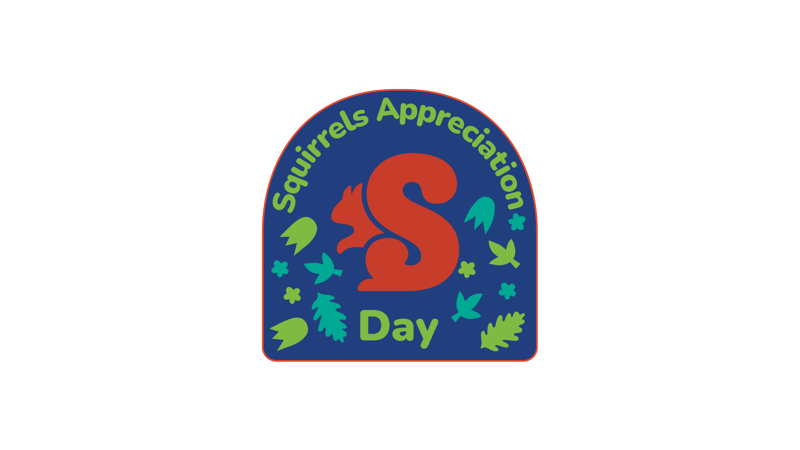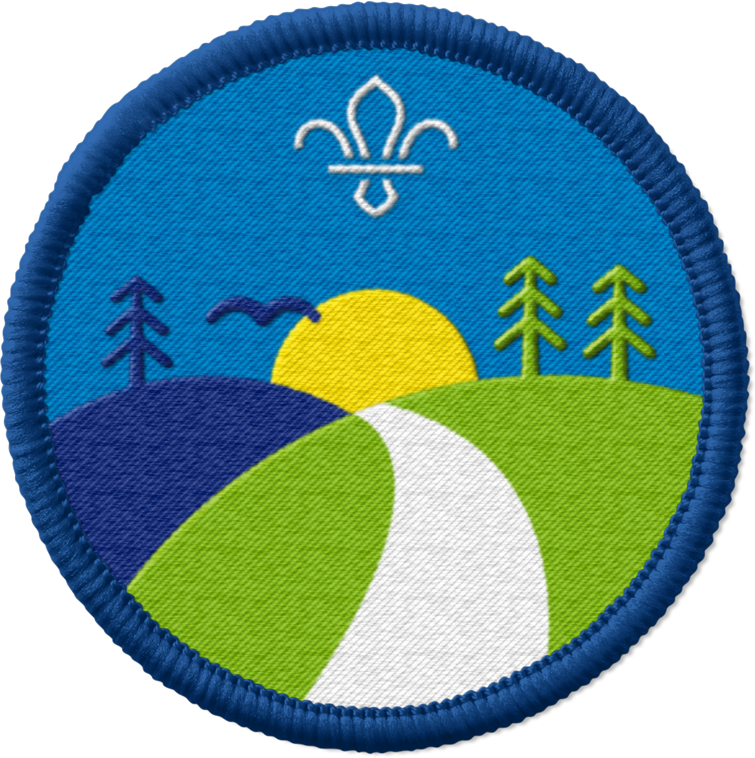
We're going on a Squirrel Search
You’ll need
- A copy of “We’re Going On A Bear Hunt” book
- Device to watch the “We’re Going On A Bear Hunt” YouTube video (optional, if you don’t have a copy of the book)
- Squirrel toy/prop
- Small picture hints
Before you begin
- Use the safety checklist to help you plan and risk assess your activity. Additional help to carry out your risk assessment, including examples can be found here. Don’t forget to make sure all young people and adults involved in the activity know how to take part safely.
- Make sure you’ll have enough adult helpers. You may need some parents and carers to help if you’re short on helpers.
- You could do this activity for Squirrel Appreciation Day on 21 January and get your paws on a fun badge from Scout Store.
Getting ready for the Squirrel Search
- Make sure everyone knows to come dressed for the weather. Don’t forget to check the forecast and be prepared for it to change. You could do it indoors around the meeting place if the weather changes.
- Before the activity, hide a squirrel toy/prop somewhere in outdoor space you’re meeting at.
- You can also leave small picture hints or a squirrel footprint trail, so everyone knows they’re going the right way. For example, they could be a trail of pictures of squirrels, with fun facts on them to place along the way for everyone to discover. Alternatively, they could be pictures of squirrel footprints for people to spot. They could be placed on things associated with squirrels, such as an acorn tree or near a pile of sticks to make Dreys.
- You may want to have a treat waiting for everyone with the squirrel, such as a snack bar. Remember to check for any dietary requirements or allergies in your group and adjust the snack choice accordingly.
Go on a Squirrel Search
- Read “We’re Going On A Bear Hunt” with your group or watch the video on a device. You could do this with the whole section or in smaller groups. You could act out the actions while reading the story with everyone.
- Once you finished the story, explain to everyone that you are going on a Squirrel Search.
- You could do this as a whole group, in smaller groups or in pairs, depending on the ratios and adult helpers available, as well as the space you’re using. For example, your meeting space may be enclosed and have enough adult supervision for young people to work in pairs, whereas you could do it as a full group at the park.
- Ask everyone what they think squirrels move and sound like. You could act out or talk about how a squirrel moves in nature, the sound they make, and if they move slow or fast.
- Get everyone ready to explore outside.
- It’s time to start your Squirrel Search. You could move and act like squirrels while exploring outside.
- Ask everyone if they can spot the hidden squirrel. They may have left some clues for people to find.
- If you placed squirrel prints or hints, remember to follow the same path or route. You could let the young people try to search for them to know if you’re going in the right direction.
- Finish your squirrel search by letting the young people find the toy you placed earlier. Why is it where it is? Is it near a pile of acorns, in woodland or near a nest? Think about why the squirrel may have chosen that spot!
- While you’re outside, consider collecting natural resources, such as pine cones, leaves or twigs, that you could use for a craft activity afterwards.
- Once you’ve found the squirrel, gather in a circle. If you left facts with the hidden clues, see if anyone can remember any of them.
Reflection
This activity needed you to have fun and value the outdoors whilst acting like squirrels in your local area.
Going on your Squirrel Search
- Did you enjoy the “We’re Going On A Bear Hunt” story? What was your favourite part of the story?
- What actions did you do to pretend to be a squirrel? Were they easy activities? Was it fun to be a squirrel?
- How did it make you feel being outside? Did you enjoy looking for squirrel hints?
- Did you find the squirrel toy at the end? Was it easy to find or was it hiding from you in the trees?
Safety
All activities must be safely managed. You must complete a thorough risk assessment and take appropriate steps to reduce risk. Use the safety checklist to help you plan and risk assess your activity. Always get approval for the activity, and have suitable supervision and an InTouch process.
- Outdoor activities
You must have permission to use the location. Always check the weather forecast, and inform parents and carers of any change in venue.
- Visits away from your meeting place
Complete a thorough risk assessment and include hazards, such as roads, woodland, plants, animals, and bodies of water (for example, rivers, ponds, lakes, and seas). You’ll probably need more adult helpers than usual. Your risk assessment should include how many adults you need. The young people to adult ratios are a minimum requirement. When you do your risk assessment, you might decide that you need more adults than the ratio specifies. Think about extra equipment that you may need to take with you, such as high visibility clothing, a first aid kit, water, and waterproofs. Throughout the activity, watch out for changes in the weather and do regular headcounts.
- Gardening and nature
Everyone must wash their hands after the activity has finished. Wear gloves if needed. Explain how to safely use equipment and set clear boundaries so everyone knows what’s allowed.
- Road safety
Manage groups carefully when near or on roads. Consider adult supervision and additional equipment (such as lights and high visibility clothing) in your risk assessment.
You could make this more of an adventure or challenge by using a map and putting markers on it for everyone to navigate too. If you’re hiding clues, you can make them in the form of puzzles for everyone to solve.
Make sure the location and route you plan is accessible for everyone, for example by avoiding steps or including places to rest. If someone’s struggling with the hints and clues, people could work in pairs or groups up, so they can help each other.
All Scout activities should be inclusive and accessible.
If you’ve collected natural resources while you were on your Squirrel Hunt, use them to take part in a craft activity. You could try Leaf royalty, Make a cosy nest or Magical tree trolls.
Instead of hiding the squirrel for everyone to find, you can let two young people hide the toy with an adult for everyone to find. Two young people could also pretend to be squirrels and have to go and hide, with an adult, with everyone having to find them.

